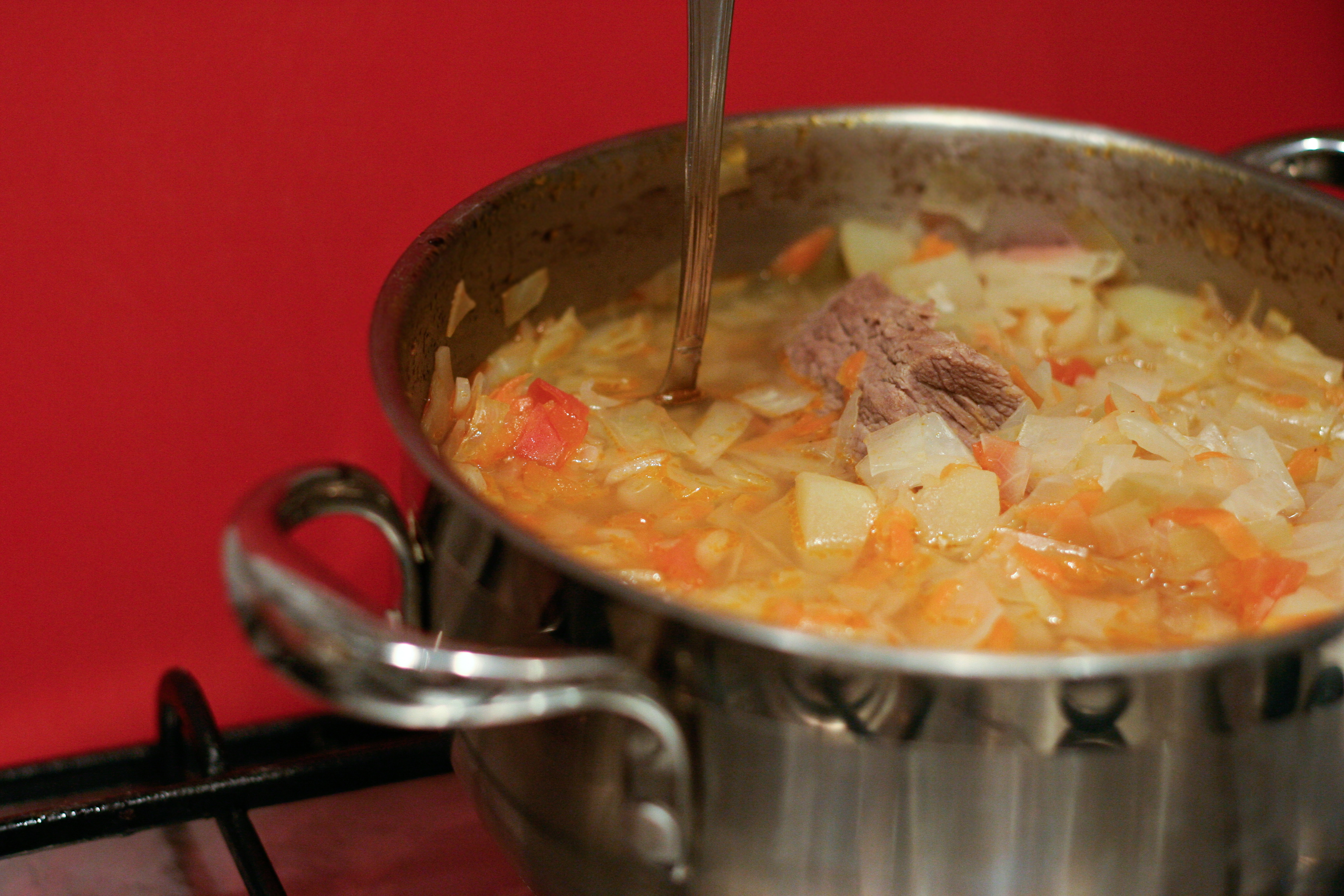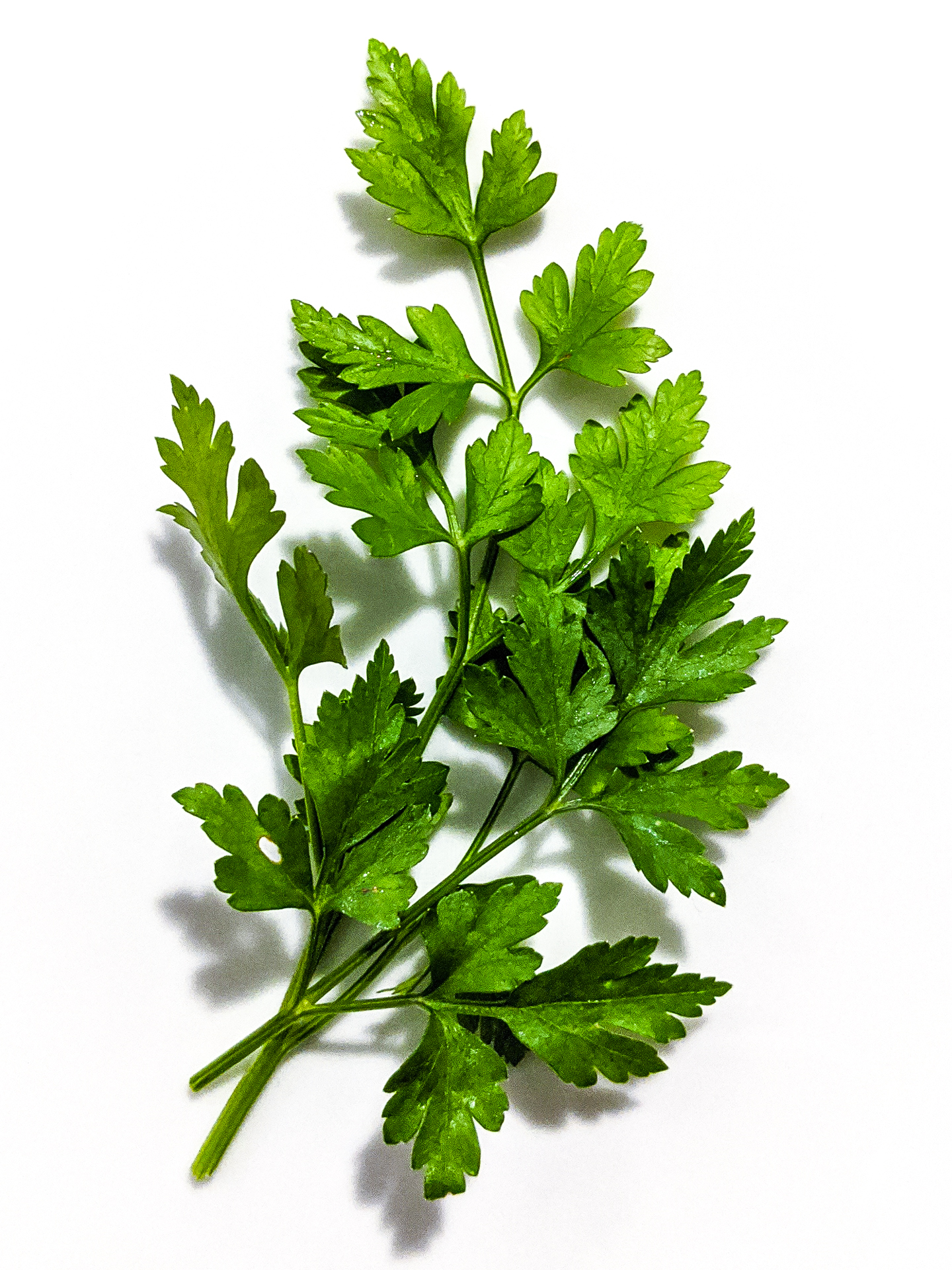|
Shchi
Shchi ( rus, щи, p=ɕːi, a=Ru-щи.ogg, sometimes transliterated as šči) is a Russian cuisine, Russian-style cabbage soup. When sauerkraut is used instead, the soup is called sour shchi, while soups based on sorrel, spinach, Urtica dioica, nettle, and similar plants are called green shchi ( rus, зелёные щи, p=zʲɪˈlʲɵnɨje ɕːi). In the past, the term ''sour shchi'' was also used to refer to a drink, a variation of kvass, which was unrelated to the soup. History Shchi (from , the plural of "''съто''" (s(i)to) – "something satisfying, feed") is a traditional soup of Russia. Cabbage soups have been known in Kievan Rus as far back as the 9th century, soon after cabbage was introduced from Byzantine Empire, Byzantium. Its popularity in Russia originates from several factors: * Shchi is relatively easy to prepare; * it can be cooked with or without various types of meat; * and it can be frozen in the winter and carried as a solid on a trip to be cut up when n ... [...More Info...] [...Related Items...] OR: [Wikipedia] [Google] [Baidu] |
Russian Cuisine
Russian cuisine is a collection of the different dishes and cooking traditions of the Russians, Russian people as well as a list of culinary products popular in Russia, with most names being known since pre-Soviet times, coming from all kinds of social circles. History The history of Russian cuisine was divided in four groups: Old Russian cuisine (9th to 16th century), Old Moscow cuisine (17th century), the cuisine that existed during the ruling of Peter the Great, Peter and Catherine the Great (18th century), and finally Petersburg cuisine, which took place from the end of the 18th century to the 1860s. In the Old Russian period, the main food groups were bread, grains, and other foods that contained starch. Women baked pies with many different fillings, such as mushrooms or berries. During gatherings, a loaf of bread and salt was always present. Kasha, such as buckwheat and oats, were represented as wellbeing to the household. Many Russians used honey and berries and mad ... [...More Info...] [...Related Items...] OR: [Wikipedia] [Google] [Baidu] |
Cabbage Soup
Cabbage soup may refer to any of the variety of soups based on various cabbages, or on sauerkraut and known under different names in national cuisines. Often it is a vegetable soup, with lentils, peas or beans in place of the meat. It may be prepared with different ingredients. Vegetarian cabbage soup may use mushroom stock. Another variety is using a fish stock. There is also a preference to cook cabbage soup using a pork stock. In national cuisines Cabbage soup is popular in Russian, Polish, Slovak and Ukrainian cuisine. It is known as or in Polish, in Slovak, and () in Ukrainian. It would be () in Russian, however. The same goes to Czech ( or ), German ( or ), French () cuisine, Finnish () and Swedish (). Shchi ''Shchi'' () is a national dish of Russia. While commonly it is made of cabbage, dishes of the same name may be based on dock, spinach or nettle. * The sauerkraut variant of cabbage soup is known to Russians as "sour " ("кислые щи"), as ... [...More Info...] [...Related Items...] OR: [Wikipedia] [Google] [Baidu] |
Kasha
In English, kasha usually refers to the pseudocereal buckwheat or its culinary preparations. In Slavic languages, "kasha" means porridge or puree. In some varieties of Eastern European cuisine, ''kasha'' can apply to any kind of cooked grain. It can be baked but most often is boiled, either in water or milk, but the word can also refer to the grain before preparation, which corresponds to the definition of ' groats'. The word "kasha" is used in Belarus (), the Czech Republic (), Lithuania (), Poland (), Romania and Moldova (), Russia (), Slovakia (), Slovenia (), Kazakhstan, and Ukraine (). The English-language usage of kasha, which refers primarily to buckwheat, probably originated with Jewish immigrants, as did the form ''kashi'' (literally translated as "porridges"). In Ashkenazi Jewish culture As an Ashkenazi-Jewish comfort food, kasha is often served with onions and brown gravy on top of farfalle, known as kasha varnishkes. Kasha is a popular filling for knishes and ... [...More Info...] [...Related Items...] OR: [Wikipedia] [Google] [Baidu] |
Green Shchi
Sorrel soup is made from water or broth, sorrel leaves, and salt.Екатерина Авдеева. Ручная книга русской опытной хозяйки. СПб, 1842 Елена Молоховец. ''Подарок молодым хозяйкам''. 1-е издание, 1861, с. 65 Varieties of the same soup include spinach, garden orache, chard, nettle, and occasionally dandelion, goutweed or ramsons, together with or instead of sorrel. It is known in Ashkenazi Jewish, Belarusian, Estonian, Hungarian, Latvian, Lithuanian, Romanian, Armenian, Georgian, Polish, Russian and Ukrainian cuisines. Its other English names, spelled variously schav, shchav, shav, or shtshav, are borrowed from the Yiddish language, which in turn derives from Slavic languages, like for example Belarusian шчаўе, Russian and Ukrainian щавель, ''shchavel'', Polish ''szczaw''. The soup name comes ultimately from the Proto-Slavic ''ščаvĭ'' for sorrel. Due to its common ... [...More Info...] [...Related Items...] OR: [Wikipedia] [Google] [Baidu] |
Russia
Russia, or the Russian Federation, is a country spanning Eastern Europe and North Asia. It is the list of countries and dependencies by area, largest country in the world, and extends across Time in Russia, eleven time zones, sharing Borders of Russia, land borders with fourteen countries. Russia is the List of European countries by population, most populous country in Europe and the List of countries and dependencies by population, ninth-most populous country in the world. It is a Urbanization by sovereign state, highly urbanised country, with sixteen of its urban areas having more than 1 million inhabitants. Moscow, the List of metropolitan areas in Europe, most populous metropolitan area in Europe, is the capital and List of cities and towns in Russia by population, largest city of Russia, while Saint Petersburg is its second-largest city and Society and culture in Saint Petersburg, cultural centre. Human settlement on the territory of modern Russia dates back to the ... [...More Info...] [...Related Items...] OR: [Wikipedia] [Google] [Baidu] |
Sauerkraut
Sauerkraut (; , ) is finely cut raw cabbage that has been fermented by various lactic acid bacteria. It has a long shelf life and a distinctive sour flavor, both of which result from the lactic acid formed when the bacteria ferment the sugars in the cabbage leaves. Overview and history Fermented foods have a long history in many cultures. The Roman writers Cato (in his '' De agri cultura'') and Columella (in his '' De re Rustica'') mentioned preserving cabbages and turnips with salt. According to Wilhelm Holzapfel et al, Plinius the Elder, writing in the first century A.D., is reputed to have been the first writer to describe the making of sauerkraut by preserving what the Romans called ''salt cabbage'' in earthen vessels. Popular folklore has imagined that sauerkraut was introduced to Europe by the trade networks formed across Eurasia by the Golden Horde. However, according to Mack and Surina (2005), there is no evidence to support this theory, nor any evidence that f ... [...More Info...] [...Related Items...] OR: [Wikipedia] [Google] [Baidu] |
Byzantium
Byzantium () or Byzantion () was an ancient Greek city in classical antiquity that became known as Constantinople in late antiquity and Istanbul today. The Greek name ''Byzantion'' and its Latinization ''Byzantium'' continued to be used as a name of Constantinople sporadically and to varying degrees during the thousand-year existence of the Eastern Roman Empire, which also became known by the former name of the city as the Byzantine Empire. Byzantium was colonized by Greeks from Megara in the 7th century BCE and remained primarily Greek-speaking until its conquest by the Ottoman Empire in 1453 CE. Etymology The etymology of ''Byzantium'' is unknown. It has been suggested that the name is of Thracian origin. It may be derived from the Thracian personal name Byzas which means "he-goat". Ancient Greek legend refers to the Greek king Byzas, the leader of the Megarian colonists and founder of the city. The name '' Lygos'' for the city, which likely corresponds to an earlier T ... [...More Info...] [...Related Items...] OR: [Wikipedia] [Google] [Baidu] |
Eastern Orthodox Church
The Eastern Orthodox Church, officially the Orthodox Catholic Church, and also called the Greek Orthodox Church or simply the Orthodox Church, is List of Christian denominations by number of members, one of the three major doctrinal and jurisdictional groups of Christianity, with approximately 230 million baptised members. It operates as a Communion (Christian), communion of autocephalous churches, each governed by its Bishop (Orthodox Church), bishops via local Holy Synod, synods. The church has no central doctrinal or governmental authority analogous to the pope of the Catholic Church. Nevertheless, the Ecumenical Patriarch of Constantinople is recognised by them as ''primus inter pares'' (), a title held by the patriarch of Rome prior to 1054. As one of the oldest surviving religious institutions in the world, the Eastern Orthodox Church has played an especially prominent role in the history and culture of Eastern Europe, Eastern and Southeastern Europe. Since 2018, the ... [...More Info...] [...Related Items...] OR: [Wikipedia] [Google] [Baidu] |
Parsley
Parsley, or garden parsley (''Petroselinum crispum''), is a species of flowering plant in the family Apiaceae that is native to Greece, Morocco and the former Yugoslavia. It has been introduced and naturalisation (biology), naturalized in Europe and elsewhere in the world with suitable climates, and is widely cultivated as an herb and a vegetable. It is believed to have been originally grown in Sardinia, and was cultivated in around the 3rd century BC. Linnaeus stated its wild habitat to be Sardinia, whence it was brought to England and apparently first cultivated in Britain in 1548, though literary evidence suggests parsley was used in England in the Middle Ages as early as the Anglo-Saxon period. Parsley is widely used in European cuisine, European, Middle Eastern cuisine, Middle Eastern, and American cuisine. Curly-leaf parsley is often used as a garnish (food), garnish. In Central European cuisine, central Europe, Eastern European cuisine, eastern Europe, and southern Eur ... [...More Info...] [...Related Items...] OR: [Wikipedia] [Google] [Baidu] |
Ketchup
Ketchup or catsup is a table condiment with a sweet and sour flavor. "Ketchup" now typically refers to tomato ketchup, although early recipes for different varieties contained mushrooms, oysters, mussels, egg whites, grapes, or walnuts, among other ingredients. Tomato ketchup is made from tomatoes, sugar, and vinegar, with seasonings and spices. The spices and flavors vary but commonly include onions, allspice, coriander, cloves, cumin, garlic, mustard and sometimes include celery, cinnamon, or ginger. The market leader in the United States (60% market share) and the United Kingdom (82%) is Heinz Tomato Ketchup. Tomato ketchup is often used as a condiment for dishes that are usually served hot, and are fried or greasy: e.g., french fries and other potato dishes, hamburgers, hot dogs, chicken tenders, hot sandwiches, meat pies, cooked eggs, and grilled or fried meat. Ketchup is sometimes used as the basis for, or as one ingredient in, other sauces and dressings, an ... [...More Info...] [...Related Items...] OR: [Wikipedia] [Google] [Baidu] |
Pasta
Pasta (, ; ) is a type of food typically made from an Leavening agent, unleavened dough of wheat flour mixed with water or Eggs as food, eggs, and formed into sheets or other shapes, then cooked by boiling or baking. Pasta was originally only made with durum, although the definition has been expanded to include alternatives for a gluten-free diet, such as rice flour, or legumes such as beans or lentils. Pasta is believed to have developed independently in Italy in the Middle Ages, Italy and is a staple food of Italian cuisine, with evidence of Etruscan civilization, Etruscans making pasta as early as 400 BCE in Italy. Pastas are divided into two broad categories: dried () and fresh (Italian: ). Most dried pasta is produced commercially via an Food extrusion, extrusion process, although it can be produced at home. Fresh pasta is traditionally produced by hand, sometimes with the aid of simple machines.Hazan, Marcella (1992) ''Essentials of Classic Italian Cooking'', Knopf, F ... [...More Info...] [...Related Items...] OR: [Wikipedia] [Google] [Baidu] |
Tomato Soup
Tomato soup is a soup with tomatoes as the primary ingredient. It can be served hot or cold, and may be made in a variety of ways. It may be smooth in texture, and there are also recipes that include chunks of tomato, cream, chicken or vegetable stock, vermicelli, chunks of other vegetables and meatballs. Many countries have their own versions of tomato soup which all vary in taste, portions and ingredients. History The first published recipe for tomato soup appeared in N. K. M. Lee's ''The Cook's Own Book'' in 1832. Eliza Leslie's tomato soup recipe featured in ''New Cookery Book'' in 1857 popularized the dish. The Campbell Soup Company later helped popularize the dish with the introduction of condensed tomato soup in 1897. In America, tomato soup was generally not consumed throughout the pre-civil war era due to a widespread belief that tomatoes were poisonous. Nutrition Depending on the recipe, tomato soup is generally low in calories and high in potassium and vitamins ... [...More Info...] [...Related Items...] OR: [Wikipedia] [Google] [Baidu] |







